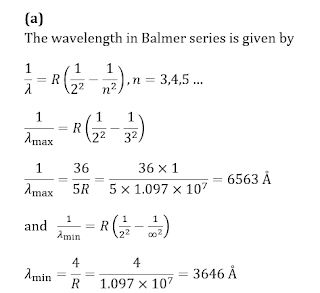NUCLEI QUIZ-18
Dear Readers,
JEE Advanced Physics Syllabus can be referred by the IIT aspirants to get a detailed list of all topics that are important in cracking the entrance examination. JEE Advanced syllabus for Physics has been designed in such a way that it offers very practical and application-based learning to further make it easier for students to understand every concept or topic by correlating it with day-to-day experiences. In comparison to the other two subjects, the syllabus of JEE Advanced for physics is developed in such a way so as to test the deep understanding and application of concepts.
Q1.Statement 1: Neutrons penetrate matter more readily as compared to protons
Statement 2: Neutrons are slightly more massive than protons
Q2. Statement 1: According to classical theory, the proposed path of an electron in Rutherford atom model will be parabolic
Statement 2: According to electromagnetic theory an accelerated particle continuously emits radiation
Solution
(d)
According to classical electromagnetic theory, an accelerated charged particle continuously emits radiation. As electrons revolving in circular paths are constantly experiencing centripetal acceleration, hence they will be losing hteir energy continuously and the orbital radius will go on decreasing, form spiral and finally the electron will fall in the nucleus
Q3.Statement 1: Balmer series lies in the visible region of electromagnetic spectrum.
Statement 2: 1/λ=R(1/2^2 -1/n^2 ), where n=3,4,5
Q4.Statement 1: The ionizing power of β-particle is less compared to α-particles but their penetrating power is more
Statement 2: The mass of β-particle is less than the mass of α-particle
Solution
(b)
β-particles, being emitted with very high speed compared to α-particles, pass for very little time near the atoms of the medium. So the probability of the atoms being ionized is comparatively less. But due to this reason, their loss of energy is very slow and they can penetrate the medium through a sufficient depth
Q5.
Statement 1: It is not possible to use ^35 Cl as the fuel for fusion energy
Statement 2: The binding energy of ^35 Cl is too small
Solution
(c)
In fusion, lighter nuclei are used so fusion is not possible with ^35 Cl. Also binding energy of ^35 Cl is not too small
>
Q6. Statement 1: Hydrogen atom consists of only one electron but its emission spectrum has many lines
Statement 2: Only Lyman series is found in the absorption spectrum of hydrogen atom whereas in the emission spectrum, all the series are found
Solution
(b)
When the atom gets appropriate energy from outside, then this electron rises to some higher energy level. Now it can return either directly to the lower energy level or come to the lowest energy level after passing through other lower energy levels, hence all possible transitions take place in the source and many lines are seen in the spectrum
Q8. Statement 1: Bohr had to postulate that the electrons in stationary orbits around the nucleus do not radiate
Statement 2: According to classical physics all moving electrons radiate
Q9. Statement 1: On a decay, daughter nucleus shifts two places to the left from the parent nucleus.
Statement 2: An alpha particle carries four units of mass.
Q10. Statement 1: The binding energy per nucleon, for nuclei with atomic mass number A>100, decreases with A
Statement 2: The nuclear forces are weak for heavier nuclei
Solution
(c)
Nuclear force is nearly same for all nucleus







